Somatic Psychology
A Unique Synthesis!
Enjoy a chapter of our new book
Esoteric Anatomy The Body as Consciousness by Bruce Burger |
John Ivey
Esoteric Anatomy The Body as Consciousness by Bruce Burger |
Esoteric Anatomy offers a spiritual approach to massage, bodywork, and somatic psychology, demystifying an ancient transpersonal model for understanding energy in nature and working with consciousness in the healing arts.
. . .exceptionally well thought out, wonderfully illustrated and
clearly organized. I highly recommend it as a reference book
on human energy dynamics and energy medicine.
Franklyn Sills, Author of Craniosacral Biodynamics, The Polarity Process
"When I hold this text, I feel as though I am holding one of the more important documents of our time--an extremely comprehensive and extraordinary map of our subtle anatomy.... Bruce has mindfully woven insights from the wisdom of ancient India to create a unique approach for understanding and working with life force, the healing presence of the soul."
"The first section of this book, "Loving Hands Are Healing Hands," contains a series of energy-balancing sessions based upon Polarity Therapy. While quite simple and easy to learn,.. [they] are profoundly effective. Then, through a holistic approach to healing, Bruce presents a system of somatic psychology for cleaning trauma from the cellular memory of the body. "
--Richard Gordon, Author of Quantum Touch, Your Healing Hands
"Esoteric Anatomy is a thorough and scholarly exploration of "Energy in the Healing Arts." Bruce Burger's long experience in the field and sincere dedication to integrating spirit with physical and emotional health are reflected on every page. This book is a significant addition to holistic-health literature, and the Polarity Therapy community. "
John Chitty, RPP, author of Energy Exercises
"With Esoteric Anatomy, Bruce Burger integrates profound levels of Oriental wisdom and Ayurvedic theories of creation and transformation in a new and convincing way. The implications are completely transforming for every type of body therapy as well as the healing arts in general."
--Paul Pitchford, author of Healing with Whole Foods: Oriental Traditions and Modern Nutrition
Bruce Burger, MA, RPP, RPE, is the founder of Heartwood Institute, which was one of the world's leading centers for professional training in massage and somatic psychology. Located on 200 acres outside Garberville, California, Heartwood is served for over thirty years as a utopian community and educational institution. Bruce holds degrees from the University of Pennsylvania and the New School for Social Research. He has been a member of the faculties of the University of Nevada and Rutgers University. Over the years he has been blessed with opportunities to study the Sanatana Dharma (East Indian Philosophy). Bruce has devoted his life to exploring natural healing and human potential.
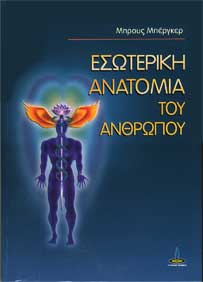
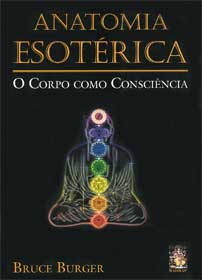
1 What Is Polarity Therapy? 3
2 The Practice of Polarity Therapy 17
3 Transformational Body Therapy 29
4 Hands-On Energy Balancing Protocols
Sattvic Session 39
Rajasic Session 47
Tamasic Session 54
Foot Reflexology Session 62
Core Session 67
Spine Session 4
Perennial Session 80
Pelvic Session 87
Sacrum Session 93
Diaphragm and Heart Session 97
Joint Session 102
5 Polarity Therapy: A Transpersonal Approach to Natural Healing 109
6 The Theory of Theomorphic Resonance 121
7 The Evolutionary Cycle 133
8 The Golden Spiral: A Key to Understanding Energy in Nature 143
9 Purusha: The Omnipresent Cosmic Person 167
10 Sound Is the Temple of the Spirit 91
11 Babbitt's Atom: The Key to the Secret Teachings of All Ages 211
12 Breath and the Cosmos 227
13 Intelligence Fixed in the Breathing Spirit Is the Hub of Being 241
14 Archetypes as Founts of Creative Intelligence 249
15 Conclusion: The Evolutionary Perspective 269
16 Somatic Psychology 281
17 Elemental Imbalance and Character Disorders 305
18 The Ultimate Medicine 315
Appendix
A Conscious Sound Vibration as a Healing Technique 333
B Body Reading: Every Wrinkle Tells a Story 339
C Polarity Cleansing Diet 345
D Right Livelihood: Your Career as a Polarity Therapist
E APTA Standards For Practice: Theory and Basic Principles of Polarity Therapy 359
Glossary 367
Bibliography 377
Index 383
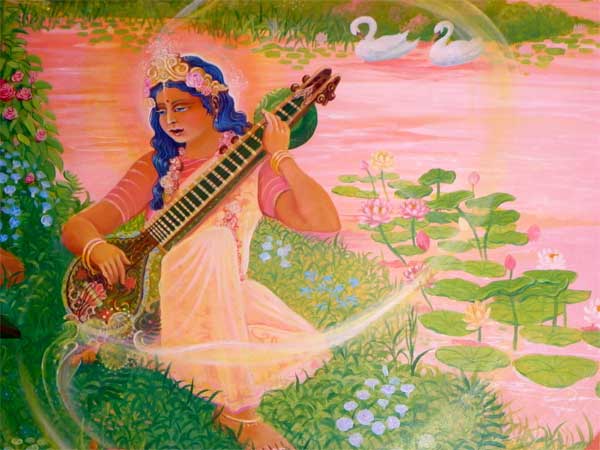
The Soul is a unit drop of the ocean of Eternal Spirit which is the dweller in the body as the knower, seer, doer; it experiences all sensation and action. It alone is the power in the body which reacts to any mode of application of therapy or action. Consciousness and intelligence reside within the Soul.Dr. Randolph Stone1
Polarity Therapy is a comprehensive health-care system based on principles of natural healing and esoteric philosophy. Esoteric philosophy relates to higher knowledge which is hidden from ordinary understanding and revealed only to those who have evolved their consciousness through an earnest quest for deeper insight into the great mystery of life and sentience. Polarity Therapy is unique as a Western healing art in that it offers an illuminating transpersonal approach to healing, health building, and somatic psychology. Transpersonal is defined as transcending the personal or individual. Transpersonal refers to ancient esoteric schools of philosophy, psychology, and self-development which view individuality-in a certain profound sense-as not real.2
In recent years many traditions of transpersonal psychology have been brought to our attention in the West. Yoga, union with the higher self, has become a household word. Westerners are practicing a myriad of techniques of yogic Self-cultivation. Yoga psychology has been systematically formulated and practiced for millennia. Its efficacy for healing and for the acceleration of personal evolution has been replicated over thousands of years. In this essay, our goal is to make clear a model of esoteric psychology which underlies yogic practices. Our intention is to illuminate an ancient model for the practice of energy medicine and to underscore the appropriateness of Polarity Therapy for the practice of somatic psychology.
The Ancient Wisdom
The most lucid of the esoteric traditions which inspire the Polarity paradigm is the Sanatana Dharma, the timeless philosophy of ancient India. The Sanskrit term Sanatana, which is often translated as "eternal," means "prior to time." Dharma, which is often translated as "righteousness, religion, or law," comes from Sanskrit roots which mean "to uphold". It relates to a way of living that unites one with the Transcendental Self.
The Sanatana Dharma represents the largest, most coherent corpus of the ancient wisdom presently available. These teachings are said to have come out of a golden age, from a time before the great civilizations of Egypt, Babylon, Athens, and Rome. The Sanatana Dharma is what remains of an ancient system of higher knowledge, which in another age was the inheritance of the whole of humanity. Historian Will Durant points out that: "India was the Motherland of our race, and Sanskrit the mother of Europe's languages. She was the mother of our philosophy; mother, through the Arabs, of much of our mathematics; mother, through the Buddha, of the ideals embodied in Christianity; mother, through the village community, of self-government and democracy. Mother India is in many ways the mother of us all."3
The Sanatana Dharma insists that it is not a religion, but is: "the holder of a tradition common to all men, encompassing all that revelation and men's effort have produced in terms of knowledge."4 Sages of the East worship the Sanatana Dharma as the culmination of human knowledge. In many quarters the Sanatana Dharma is venerated as ultimate truth.5
The Sanatana Dharma has been preserved in the Vedas (from Sanskrit Vid,"to know") which are the oldest known Indo-European religious and philosophical writings.6 While Western scholars date these teachings to a time thirty to fifty centuries past, tradition emphasizes their revealed and eternal character. What is most remarkable about these primordial teachings is that they have not been lost in the rubble of history but have been preserved with profound integrity as a contemporary esoteric tradition. While: "the Pyramids have been eroded by desert wind, . . . broken by earthquakes, . . . stolen by robbers, . . . the Vedas remain, recited daily by an unbroken chain of generations, traveling like a great wave through the living substance of the mind."7
The final teachings of the Vedas is called Vedanta. Veda means "wisdom" and anta, "the culmination or essence of wisdom." The German philosopher Schopenhauer attests: "In the whole world there is no religion or philosophy so sublime and elevating as Vedanta. This Vedanta has been the solace of my life, and it will be the solace of my death."8
Aldous Huxley, a seminal thinker in the contemporary consciousness movement, asserts that there is a timeless truth revealed cross-culturally and trans-historically through mystical contemplation. He refers to this wisdom as the Perennial Philosophy. Huxley writes: "In Vedanta and Hebrew prophecy, in the Tao Teh King and the Platonic dialogues, in the Gospel according to St. John and Mahayana theology, in Plotinus and the Areopagite, among the Persian Sufis and the Christian mystics of the Middle Ages and the Renaissance . . . Hindu, Buddhist, Hebrew, Taoist, Christian, or Mohammedan, were attempting to describe the same essentially indescribable Fact." Huxley goes on to introduce The Bhagavad Gita (The Song of God), an ancient Gospel cherished by many as the quintessence of the Sanatana Dharma. Huxley continues, The Bhagavad Gita . . . "is one of the clearest and most comprehensive summaries of the Perennial Philosophy ever to have been made."9
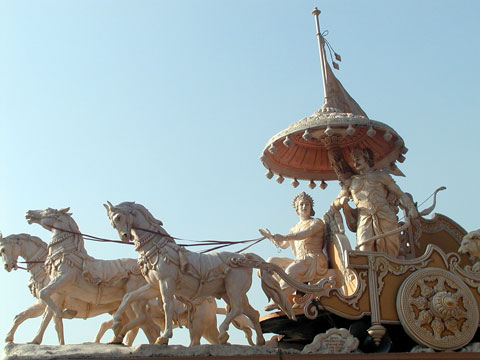
Arjuna receives the teachings of the Bhagavad Gita from Sri Krishna
The Bhagavad Gita offers an understanding of The Great Mystery which has inspired many of the giants of the Western intellectual tradition. The transcendentalist poets Emerson, Thoreau, and Whitman were students of The Bhagavad Gita. Thoreau wrote: "In the morning I bathe my intellect in the stupendous cosmological philosophy of The Bhagavad Gita, in comparison with which our modern world and its literature seem puny and trivial." Emerson, referring to the Gita, wrote: "It was the first of books. It was as if an empire spoke to us, nothing small or unworthy, but large, serene, consistent, the voice of an old intelligence which in another age . . . had pondered and thus disposed of the same questions which exercise us."10
Advaita: a Vision of Oneness
The wisdom of the Sanatana Dharma has its foundation in the principle of advaita. This Sanskrit term means "not two." The doctrine of advaita asserts an identity of all-consciousness, a vision of the universe as one living conscious being.
Advaita reveals that beyond the endlessly changing mind, emotions, intellect, and body is the unchanging awareness of subjective consciousness. Advaita points out that our sense of self refers to this immutable witness. This presence of living consciousness, which is our essential nature, is called the Self. "What then is the reality behind all our experiences? There is only one thing that never leaves us-deep consciousness. This alone is the constant feature of all experience. And this consciousness is the real, absolute Self."11
Advaita asserts that the consciousness of each individual is a portion of one universal consciousness, the Atman, which is a portion of the Divine manifesting as individual awareness. "The Atman or Self is all-pervading, immense, the ground and agent of knowledge. It is thus the seat of consciousness."12 Advaita postulates that the subjective awareness, the Self, the cognizance, the intelligence in each being is a portion of a single, transpersonal, timeless, immutable, omniscient, universal consciousness called Brahman. The identity of Brahman, the Supreme Being and Atman, the portion of the Ultimate supporting individual life is the basic truth of the Sanatana Dharma. The revered sage Shankara (A.D. 686) explains: "The wise men of true discrimination understand that the essence of both Brahman and Atman is Pure Consciousness, and thus realize their absolute identity. The identity of Brahman and Atman is declared in hundreds of holy texts."13 The ancient esoteric texts, The Upanishads, declare: "Of everything, God is the innermost Self."14
Shankara continues:
Just as a clay jar or vessel is understood to be nothing but clay, so this whole universe, born of Brahman, essentially Brahman, is Brahman only-for there is nothing else but Brahman, nothing beyond That. That is the only Reality. That is our Atman. Therefore, "That art Thou"-pure, blissful, supreme Brahman, the one without a second.15 There is no higher knowledge than to know the Atman is one, and everywhere."16 The wave, the foam, the eddy and the bubble are all essentially water. Similarly, the body and the ego are really nothing but pure consciousness. Everything is essentially consciousness . . . This entire universe of which we speak and think is nothing but Brahman.17
Advaita asserts an identity between the Supreme Being, Paramatman, and the individual Self, Atman. R. C. Zaehner, Professor of Eastern Religions at Oxford University, writes: "When the mystic says 'I am Brahman,' he is speaking the literal and only truth; the source and ground of the whole universe of appearances is identical with the innermost essence of man. There is nothing else."18 The ancient wisdom invites us to become a mystic, to know the Self, for without this knowledge everything else is ignorance. The foundation of the ancient wisdom is Self-realization, the knowledge of the Transcendental Self. The sage Shankara declares: "There is no higher knowledge than to know that the Atman is one and everywhere."19 The ancient sages harmonized their bodies and quieted their minds to realize the Transpersonal Self. "Brahman is all-this universe and every creature."20
In the revered scripture, The Bhagad Gita, the Avatar (divine incarnation) Sri Krishna reveals: "My Prakriti (natural phenomena) is of eightfold composition; earth, water, fire, air, ether, mind, intellect and ego. You must understand that behind this, and distinct from it, is That which is the principle of consciousness in all beings, and the source of life in all. It sustains the universe."21
The venerated sage Sri Ramana Maharshi explains: "Since, however, the physical body cannot subsist (with life) apart from Consciousness, bodily awareness has to be sustained by pure Consciousness. The former, by its nature, is limited and can never be co-extensive with the latter which is infinite and eternal. Bodily-consciousness is merely a monad-like, miniature reflection of pure Consciousness . . . body-consciousness is only a reflected ray, as it were, of the self-effulgent infinite Consciousness."22
Advaita reveals a profound vision of the sacredness and unity of all life. The universe is understood to be a unitary field of consciousness. God did not merely create the world, God became the world. God, as ultimate consciousness, manifests this world as a tiny portion of Being.23 The universe, solar system, nature and our bodies are a single conscious living being. Atman, the living consciousness of the individual, is a drop of the ocean of consciousness of Brahman, the Supreme Being. This Supreme Being manifests the body and the world as a vehicle to express its creative potential. In this ancient paradigm, all of nature is a living Being ever seeking greater consciousness, creative unfoldment, and freedom. Each being is sacred as nothing less than a leaf on The Tree of Eternal Life. The living intelligence within each of us, the sentience, the presence, the cognizance, and awareness, the sense of "I am," is nothing less than the personification of the Great Mystery. Advaita offers a profound monism, a vision of one God . . . who is the one life and one consciousness of all beings.24
There was never a time when I did not exist, nor you . . .
Nor is there any future in which we shall cease to be.
Sri Krishna25
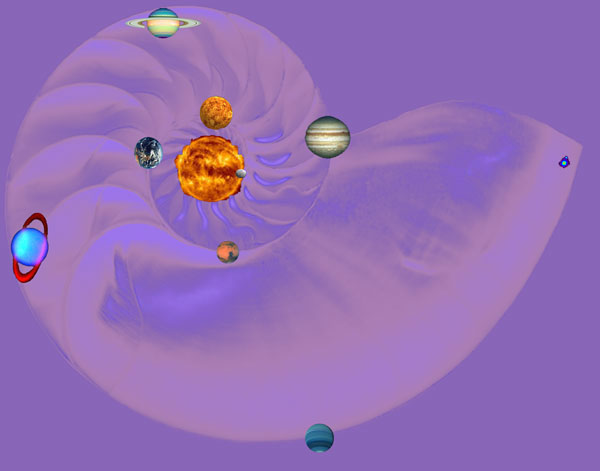
As Above So Below . . .
Bode's Law in astronomy avers that we find the same proportional harmonics
in our solar system that we find in a Chamber Nautilis.
Above & below sustained by the one life breath of our living universe . . .
Spirit and Matter
The Sanatana Dharma reveals that we exist in two dimensions-a dimension of Spirit and a dimension of matter. Our five senses are exclusively attuned to the dimension of matter. Spirit, which transcends matter, is the source of our consciousness and aliveness. The body is an emanation of Spirit. It is the body's attunement with Spirit that sustains life.
Derived from the Latin spirari, meaning "to breathe," spirit is the breath of life. The body is lifeless and unconscious without its presence. In Sanskrit the word Atman, the portion of the Divine which supports individual existence, is also from the verb root at, meaning "to breathe."26 When the body falls out of harmony with spirit, we are left with a corpse which begins to decompose immediately. Without Atman, which in the West we call the Soul (the animating force), the body is seen as something unclean and decaying, to be disposed of as soon as possible. It is only the presence of Spirit that gives this mortal coil value.
In the Sanatana Dharma, Spirit, the animating force in the body, is transpersonal and exists in a timeless dimension beyond the body and outside the cycle of birth, death, and decay.27 The spiritual dimension is an all-pervasive field of living, breathing, cosmic consciousness, beyond description and beyond change. Spirit is immutable. Dr. Stone referred to Spirit as The One Life.
In The Ultimate Medicine, the revered twentieth-century sage Sri Nisargadatta (Mr. Natural State) reveals: "Treat the life force as God itself, there cannot be consciousness without life force. So consciousness and life force are two components, inextricably woven together, of one principle . . . Once you consider that the life force is God itself, and that no other God exists, then you raise the life force to a status enabling it, together working with consciousness, to give you an understanding of the working of the whole."28
The Body as an Epiphenomenon of Consciousness29The Sanatana Dharma offers us a transpersonal paradigm. The universe is one living sentient being. In The Bhagavad Gita, Sri Krishna explains: "Know this body to be the 'field' and know me to be 'the Knower' of the field. Know also that I am the sole knower of all fields, of all bodies."
By the single sun,
This whole world is illumined:
By its one Knower,
The field (of creation) is illumined.30
A contemporary student of The Bhagavad Gita, Mathaji Vanamali, explains:
The whole of physical existence must be considered as a field of the Spirit's constructions. The "field" is the object upon which consciousness operates. The '"field" in the individual is the body, mind, intellect and senses; and universally, it is the whole of cosmic manifestation. The "knower of this field," both individually as well as in the universe is the Lord Himself, in each embodied creature, there is only one and the same "Knower" . . . one and the same consciousness. But its knowledge of the world differs because it is deflected by the consciousness passing through the limited body. In the human being this seemingly small consciousness, which is really an all consciousness, can enlarge itself to its universal size. Physically all of us are the microcosm in the macrocosm, and the macrocosm, also, is a body or "field" inhabited by the same spiritual 'Knower'. The totality of Nature, as we behold it, is the field of action, of the consciousness or Spirit.31
In the cosmology of the ancients, all creation is a play of the consciousness of One Being. Creation is a moment-to-moment appearance within this One Transpersonal Being. Dr. Deepak Chopra, referring to Ayurveda, the ancient healing science based on the Sanatana Dharma, explains: "Ayurveda's great contribution was to see the physical body as an epiphenomenon of consciousness. Consciousness shapes, controls, and even creates matter."32 "The body, the vital energy, the sense organs, the mind, the intellect and the ego-these are the coverings of the Atman."33 All the material energy fields of the body are emanations from this innermost yet all-pervasive center whose presence is the sentience and awareness in the body.
At the nucleus of every atom, molecule, and cell of the body is an energy field of a higher potential which is in tune with the spiritual realm. This is the animating principal of the body, the Soul.34 The physical field is a radiation into time and space from the nucleus of the Soul. Matter and energy are an emanation of Spirit.35 Creation is a field of consciousness. Matter is a crystallization of consciousness. The ancient wisdom offers us a sacred science. The laws that rule the crystallization of spirit into matter are universal.
The Tantric scholar Arthur Avalon (Sir John Woodroffe) reveals: "The ultimate or irreducible reality is 'Spirit' in the sense of Pure Consciousness . . . from out of which as and by its Power . . . Mind and Matter proceed. Spirit is one. There are no degrees or differences in Spirit. The spirit which is in man is the one Spirit which is in everything . . . Mind and Matter are many and of many degrees and qualities."36
Know me, eternal seed
Of everything that grows...
I am the essence of waters,
The shining of the sun and moon:
(Aum) in all the Vedas,
The word that is God.
It is I who resound in Ether
And am potent in man.
I am the sacred smell of the earth,
The light of the fire,
Life of all lives . . . Sri Krishna37
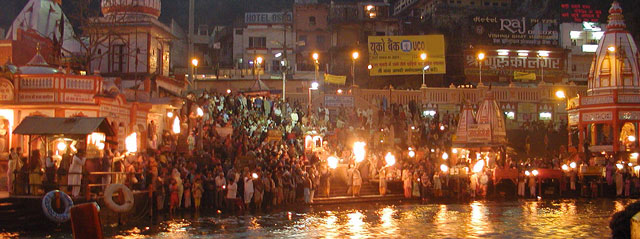
Worshiping the Great Mystery at HarkiPari on the banks of the Ganges in Haridwar, India
God Becomes the World . . .
S. Radhakrishnan, distinguished philosopher and former Prime Minister of India, explains: "God does not create the world but becomes it. Creation is expression. It is not so much making as becoming. It is the self-projection of the Supreme."38
The universe and nature are aspects of the Being of God. "God" as consciousness, Satchitananda (existence/knowledge/bliss), is wholly present as every level of creation. According to the Sanatana Dharma, God is the very stuff, the actual essence, of each and every stage/level. God, [or Brahman] is not the highest level, nor a different level itself, but the reality of all levels.39 "Brahman is Existence, Knowledge and Bliss; but these are not attributes. Brahman cannot be said to exist. Brahman is existence itself. Brahman is absolute and infinite-the eternal, immutable, illimitable, omniscient, formless Great Mystery: Being absolutely present, Brahman is within all creatures and objects."40 Brahman is the Being in human beings. In the embodied creature, this Brahman is known as Atman.
Know this Atman, Unborn, undying,
Never ceasing, Never beginning,
Deathless, birthless, Unchanging for ever.
. . . Knowing It birthless, Knowing it deathless,
Knowing it Endless, Forever unchanging
. . . Innermost element, Everywhere, always,
Being of Beings, Changeless, Eternal,
For Ever and Ever.41
Although Brahman, the Absolute itself, is indescribable and beyond qualities, its creative potency is called Brahma, the Evolver, Creator, or Emanator. Brahma, derived from the Sanskrit brih, means "to grow," "to burst forth." It is the ever-expanding breath whose rhythm is the energy of all creation.42 The nature of cosmic intelligence is to universally unfold its creative potential as growth/evolution. All the systems and subsystems of the cosmos, nature, and life processes are the ever-expanding breath of Brahma. This Cosmic Breath is the primal utterance, the divine Logos, the creative word, whose voice is perpetually creating the universe. All vibration on every level is a part of the unified field of the breath of Brahma. Our own breath is a microcosm of the evolutionary force of the macrocosm. As the life breath or prana animates the body, the breath of Brahma is the energy which animates a conscious living cosmos. 43
In the Sanatana Dharma, Brahma (the universe) is an ever-changing field of creative evolution. Brahman (the Absolute) is the unchanging omnipresent Knower of the field. In each embodied creature, there is only one and the same knower, one and the same consciousness. Brahman is the one awareness, the Self of everyone: "That which is the principle of consciousness in all beings, and the source of life in all."44
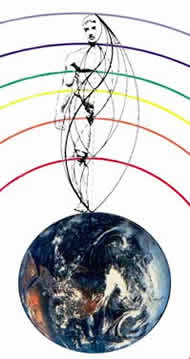
All Energy is the
Life Breath of a
Living Universe . . .
Healing is Spiritual
The body is sustained by its attunement with the Soul. The Soul is that which is actually present, cognizant, conscious in each of us as the Self. Healing is a process of attunement to the Self. We experience this attunement to higher consciousness as lucidity, positivity, inspiration, presence, and joy. All health practices promote this attunement to the Life Field, to the healing presence of the Soul. Dr. Stone explains: "True health is the harmony of life within us, consisting of peace of mind, happiness and well-being. It is not merely a question of physical fitness, but is rather a result of the Soul finding free expression through the mind and body of that individual. Such a person radiates peace and happiness, and everyone in his presence automatically feels happy and contented."45
Meditation
The Healing Process of Self Realization
In every energy system there must be a fulcrum, a center of movement, or there is chaos. The Self is the natural center of our Being. It exists within each of us, as the source of our life and our consciousness. The Self is intelligence: a sentient, cognizant, self-organizing force. The body, mind, and senses emanate from this innermost Intelligence.
We suffer from a chaos of identification with every object of the mind and senses, from a lack of connection to our Source. It is profoundly important to cultivate a relationship with the Self on a daily basis to clear the chaos of the mind. Relating to the fulcrum of Being offers us the opportunity to find a stable center for healing our lives.
The Self is pure Being. It exists in a higher realm than the mind and five senses. It exists outside of time and space. Thus it cannot be grasped directly by the mind and senses. Yet it is always present as the ground state of our consciousness. The Self is the actual cognizer and intelligence which is present from moment to moment as our awareness. But our minds are too disturbed by chaos and obsession for us to experience this truth. Soul communion purifies the mind. The potency of the Unitive Field harmonizes the lower vibrational fields of the body and mind. We can commune with the Self through the creative power of our intention. Through a passionate desire to know the Self, we can build a vehicle within our lives that is receptive to our innermost essence. Daily practices such as contemplation and worship exalt our consciousness and foster the integration of the Self into our lives. The clarity and inner peace that one experiences through meditation and yoga offer this higher knowledge as does devotion and the rapture of worship. Gratefulness, service to life, and love of the Mystery all facilitate Soul communion. A personal experience of Divine Love can become the center of our lives and the basis of a genuine sense of Self-love and Self-esteem.
Contemplation of the Higher Self
Let go of any expectation of having a phenomenal experience. Union with the Self is supersensory-beyond the mind and senses. The process is one of evolving your consciousness through a day by day, organic process of Self-realization. We make the Self real in our lives by creating the space to be with the Self. We actualize our Higher Self by investing our life in it. The sages tell us: What your mind contemplates, you become! Every thought is a prayer! You build your world through your moment-to-moment thoughts, feelings, and desires. Passionately desire to know the Self. Take the energy you have invested in obsession with your pain and suffering and refocus it into a passion to be free! Move the energy which has been invested in the distractions and trivialities of life to an earnest quest for liberation!
The eyes are the windows to the Soul. We can catch a glimpse of the Light of Life, the Presence, through the eyes. Many seekers have made a leap in consciousness through the simple practice of mirror work. It is valuable to take a few minutes each day, sitting in front of a mirror at eye level, to practice the classic "Who am I ?" contemplation, given to us by the great twentieth-century sage Sri Ramana Maharshi.
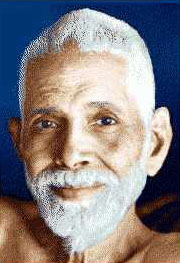
Who Am I ?
I have a body, but I am not my body.
I can see and feel my body,
and what can be seen and felt is not the true Seer.
My body may be tired or excited,
sick or healthy, heavy or light,
but that has nothing to do with my inward I.
I have a body, but I am not my body.
I have desires, but am not my desires.
I can know my desires,
and what can be known is not the true Knower.
Desires come and go, floating through my awareness,
but they do not affect my inward I.
I have desires, but I am not desires.
I have emotions, but I am not my emotions.
I can feel and sense my emotions,
and what can be felt and sensed is not the true Feeler.
Emotions pass through me,
but they do not affect my inward I.
I have emotions, but I am not emotions.
I have thoughts, but I am not my thoughts.
I can know and intuit my thoughts,
and what can be known is not the true Knower.
Thoughts come to me and thoughts leave me,
but they do not affect my inward I.
I have thoughts, but I am not my thoughts.
I am what remains, a pure center of awareness,
an unmoved witness of all these
thoughts, emotions, feelings, and desires.
Notes
1. R. Stone, Polarity Therapy: The Collected Works, Book II,he fir st pripal of Polarity Therapy, "Summary of Principles."
2. Ken Wilber, Spectrum of Consciousness, (Wheaton, Illinois: Theosophical Publishing, 1982), p. 27
3. Hinduism Today, Feb, 1996
4. Ibid..
5. Ramesh S. Balsekar, The Final Truth: A Guide to Ultimate Understanding, (Los Angeles, California: Advaita Press, 1989)
6. Dr. Stone writes: "The Vedas . . . have probably the most lengthy and accurate of all systems on the account of creation . . . The whole Vedic system is very comprehensive." Randolph Stone, Mystic Bible, (Beas, India: Radha Soami Satsang, 1977), p. 70.
7. Jean Le Mee. Hymns From The Rig Veda, (New York: Knopf, 1975), pp. ix- x.
8. Bloomfield; Religion of the Veda (1908), p. 55, in S. Radhakrishnan, The Principal Upanisads, (New York: Humanities Press, 1974), p. 17.
9. Prabhavananda and Christopher Isherwood, The Song of God: Bhagavad-Gita, (New York: Mentor Books, 1972), pp. 11-13.
10. A. C. Bhaktivedanta Swami Prabhupada, Bhagavad-Gita: As It Is, (Los Angeles, California: The Bhaktivedanta Book Trust, 1991), p. back cover. The Bhagavad Gita offers a synthesis that represents the essence of the Sanatana Dharma. Dr. Stone, the formulator of Polarity Therapy, kept the Gita at his bedside. An excellent discussion of The Bhagavad Gita is by Mathaji Vanamali, Nitya Yoga: The Path of Constant Communion, (San Diego, California: Blue Dove Press, 1997), also an excellent presentation of Bhakti Yoga and the life of Sri Krishna is by Mathaji Vanamali, The Play of God, (San Diego, California: Blue Dove Press, 1995), (800) 691-1008
11. Swami Prabhavananda and Christopher Isherwood, Shankara's Crest Jewel of Discrimination, (Hollywood, California: Vedanta Press, 1947), p. 10. Shankara's teachings are one of the foundations of contemporary Hinduism
12. Sir John Woodroffe, The World as Power, (Madras, India: Ganesh,1966), p. 158. Atman comes from the Sanskrit verb root at "to breathe." J. Tyberg, The Language of the Gods, (Los Angeles, California, East-West Cultural Center), 1970. p. 4.
13. Prabhavananda and Isherwood, Shankara's Crest Jewel of Discrimination, pp. 86-87.
14. The Upanishads, literally, "at the knee, listening," are one of the world's oldest esoteric teachings (8th century B.C.). For millennia the Sanatana Dharma has been transmitted orally through teacher's discourses on The Upanishads to earnest disciples sitting at their feet. See Eknath Easwaran, Dialogue With Death, (Petaluma, California: Nilgiri Press, 1981)
15. Prabhavananda and Isherwood, Shankara's Crest Jewel of Discrimination, p. 87.
16. Ibid., p. 104.
17. Ibid., p. 115.
18. Brahman is the Sanskrit term for the Absolute, The Supreme Being, R. C. Zaehner, The Bhagavad Gita, (New York: Oxford University Press, 1969), p. 8.
19. Prabhavananda and Isherwood, Shankara's Crest Jewel of Discrimination, p. 104.
20. Ibid., p. 131.
21. Prabhavananda and Isherwood, The Song of God, Bhagavad -Gita, p. 70.
22. N. Vasudevan, "Man and Pure Consciousness," The Mountain Path, (Tiruvannamalai, India: 1991), p. 124.
23. The Sanatana Dharma is not simply pantheistic, because it recognizes that God is beyond creation as well as within creation.
24. Paul Deussen, The Philosophy of the Upanishads, (New York: Dover, 1966), p. 195.
25. Prabhavananda and Isherwood, The Song of God: Bhagavad-Gita, p. 136.
26. Tyberg, The Language of the Gods, p. 101.
27. Spirit is infinite (Aparicchinna) and formless (Arupa). Arthur Avalon, The Serpent Power, (New York: Dover Publications, 1974), p. 26.
28. Robert Powell, Ph.D., Ed, The Ultimate Medicine, (San Diego, California: Blue Dove Press, 1994, (800) 691-1008.)
29. Epiphenomenon means a secondary phenomenon accompanying another and caused by it.
30. Ramcharaka, The Bhagavad Gita, (Chicago, Illinois: Yoga Publication Society, 1935), (parenthesis mine).
31. Vanamali, Nitya Yoga, 13 Audio Tape series, (San Diego, California: Blue Dove Press, 1995. (800) 691-1008, also published in book form, Tapovan Sari P.O., via Rishikesh, UP, 249192, India, Vanamali Ashram, 1995)
32. Dr. Deepak Chopra, "Ageless Body, Timeless Mind," Yoga Journal, Sep/Oct 93, p. 64.
33. Prabhavananda and Isherwood, Shankara's Crest Jewel of Discrimination, p. 110.
34. Stone, Book II, p. 3.
35. "Physical sciences inform us that the whole of creation is built up of layers of energy, one inside the other. The subtlest constitutes the innermost stratum of creation. Underneath the subtlest layer of all that exists in the relative field is the abstract, absolute field of pure Being. It is said that Being is the ultimate reality of creation. It is present in all forms. We may say that existence is life itself, while that which exists is the ever-changing phenomenal phase of the never changing reality of existence. Existence is the abstract basis of life on which is built the concrete structure of life." Maharishi Mahesh Yogi, The Science of Being and Art of Living, (Livingston Manor, New York: M.I.U. Press, 1976), pp. 25-28.
36. Avalon, The Serpent Power, p. 26. "Atman, the Supreme Knower in each and every one of us that is none other than Brahman, the sole and basic reality of the Universe . . ." Ken Wilber, The Spectrum of Consciousness, p. 87.
37. Prabhavananda and Isherwood, The Song of God: Bhagavad-Gita, p. 71.
38. Radhakrishnan, The Principle Upanisads, p. 82. Also, Eknath Easwaran, The Bhagavad Gita for Daily Living, Vol. I, (Petaluma, California: Nilgiri Press, 1979), Introduction. In this explication we tend to emphasize the profound eminence of God yet we will at the same time constantly bow to the transcendent as well.
39. Please appreciate that we are not being pantheistic. While we emphasize that Brahman is the world, or the sum total of the universe, we do not overlook the equally important fact that Brahman is radically prior to the universe. See Ken. Wilber ed., The Holographic Paradigm, (Boston, Massachusetts: New Science Library, 1982), p. 255; Wilber, The Spectrum of Consciousness, p. 88.
40. Prabhavananda and Isherwood, The Song of God: Bhagavad-Gita, p. 131.
41. Ibid., pp. 37-38.
42. "The Greek word phusis-the root of our modern terms physics, physiology, and physician-as well as the Sanskrit Brahman, both of which denoted the essential nature of all things, derive from the same Indo-European root Bheu [to grow]." F. Capra, The Turning Point, (New York: Bantam, 1982), p. 214.
43. For the ancients the creator was an all-pervasive consciousness that was as near to us as our own life breath. Thus we define prana as the intelligent force which is the living breathing presence of the living intelligence of the one living being of universe in the subsystems of nature and man.
44. Prabhavananda and Isherwood, The Song of God: Bhagavad-Gita, p. 70.
45. Stone, HB, p. 7.
46. Ken Wilber, No Boundary, (Boston, Massachusetts: Shambala, 1985), pp.128-129.
Book Review from APTA's Newsletter Energy
Esoteric Anatomy "The Body As Consciousness"
Esoteric Anatomy "The Body As Consciousness" may very well be the first epic of energy medicine. From discussions on sound waves and energy to practical bodywork protocols Esoteric Anatomy has it all. Esoteric Anatomy presents Polarity Therapy in the larger context of Energy Medicine. To accomplish this Bruce Burger takes the reader through a basic understanding of Polarity Therapy and than into advanced concepts of energy, sound, and somatic psychology.
Review of Esoteric Anatomy
From a Polarity Therapy teachers perspective I enjoyed the first section of the book, "Loving Hands Are Healing Hands" because it presents the learning of Polarity Therapy in a unique and creative way. Of special interest were eleven protocol sessions designed to teach basic Polarity Therapy competencies to beginning and advanced students. I am looking forward to using the protocols with my students. After reading the section I was left with the wonderful thought that there are thousands and thousands of ways to learn Polarity Therapy and the joy of experiencing the creativity and guidance of a master teacher presenting his unique method of instruction.
The next section, "Essays on Esoteric Anatomy" seemed to be written just for me. From The Theory of Theomorphic Resonance to The Golden Spiral to The Omnipresent Cosmic Person to Sound Is The Temple of the Spirit I felt as though I was eating a wonderful bowl of colored mystic jelly beans. Of course the next section, The Practice of Somatic Psychology, brought me back to earth. In this section Bruce discusses the body/mind relationship and practical methods of practice and evaluation. This is a very good section and necessary to ground out his "Essays on Esoteric Anatomy". I assume it was written so that readers like me could drive home safely.
I believe that Bruce Burger has made a tremendous contribution to the field of Polarity Therapy and the larger field of Energy Medicine. Esoteric Anatomy is truly a labor of love. There is something for every reader from beginning to advanced to learn and enjoy. I highly recommend Esoteric Anatomy to all those interested in Polarity Therapy and Energy Medicine.
Dr. John Beaulieu, N.D., Ph.D. Author of Music and Sound In The Healing Arts and The Polarity Therapy Workbook.